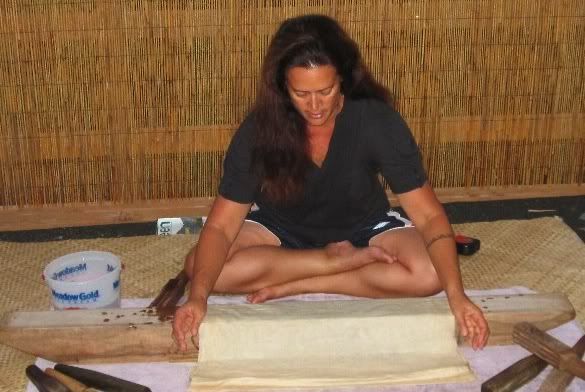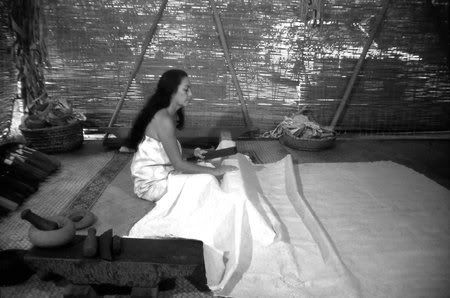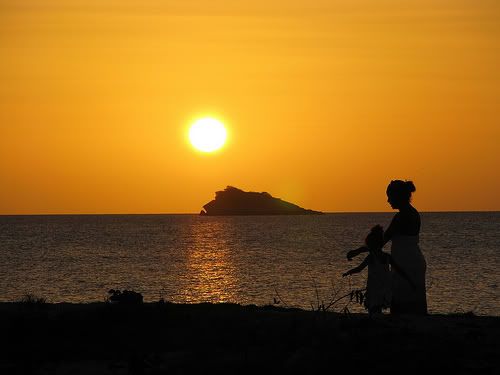 Background
Background
Dalani Tanahy is a native of San Diego California with roots in Maui and O’ahu. Her maternal grandparents are Edward Bailey and Emily Kane of Wailuku, Maui. Her paternal grandparents are Emily and Arthur Enos of La’ie, O’ahu. She grew up spending her summers in La`ie and knew she would return to live in Hawai’i one day. As a child, she enjoyed the slow tedious work involved in crocheting, knitting, embroidering and quilting. Dalani made her first i`e kuku and hohoa beaters over sixteen years ago through the help of Kawai Aona-Ueoka. Her first experience teaching kapa started at the Cultural Learning Center at Ka’ala in Wai’anae. She found the perfect marriage of art and education through creating and sharing the art of kapa and was inspired to start Kapa Hawaii. Kapa Hawaii teaches people about the types of Polynesian bark cloth collectively known as ‘tapa’ with a special emphasis on the tapa or ‘kapa’ made in the Hawaiian Islands.
 Inspiration
Inspiration
When I first saw picture of Pua Van Dorpe serenely and intently pounding a sheet of kapa, I had no idea I would be led on such a journey. As I watch other kapa makers, I can see that there is something deeper that gives artists and cultural practitioners the determination to sit for long stretches of time. As a life-long artist, I am attracted to the many disciplines involved with kapa such as: tool making, horticulture, graphic design, natural dye production, education, research, and the meditative rhythms of the beating itself. Through crafting my own tools, I was able to work with precious and wonderful natural elements such as smooth warm woods, hand-picked basalt pohaku, and opihi shells. I became a scientist in the kitchen laboratory boiling up the bark, petals, leaves, and roots that would become the brilliant blues, greens, yellows, and an unbelievable rainbow of colors that our kupuna loved to place on their kapa. I saved the maile, tuberose, and pua keni keni leis from graduations to imbue inside the kapa so that it could absorb the sweet subtle fragrance. One of the highlights of my kapa career was when I finally met Kahuna Kuku Kapa Pua Van Dorpe at her kapa exhibit at the University of Hawaii.
 Artist Statement
Artist Statement
“He Kumu Wai ‘Ole” means the water without a source. This `ōlelo no`eau refers to a story from Kawaihapai, O`ahu where fresh water miraculously appeared during a drought. I am reminded that although we did not learn kapa making from our source…our grandmothers and Kupuna, as Kupuna ourselves, our grandchildren and our many students, will learn this art from us. Kapa continues to be a personal journey for me as I teach and to learn about this practice of our Hawaiian ancestors. Kapa making has given me opportunities to work alone quietly as well as encounter places and people throughout the world. It seems that I am on my second, third, and fourth circle now as I go forward with my work of teaching, cultivating and developing as a kapa artist. I am very pleased to be able to share some of what I have learned in the hopes of giving people a small appreciation of the seemingly simple yet complex work of my Hawaiian ancestors.